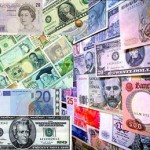The Truth Behind China’s Latest Currency Move
06/22/10 New York, New York – Over the weekend, the Chinese government announced its intentions to move away from a US dollar peg. Instead of being fixed, the country’s currency, the yuan, will be controlled by a daily band, with the ultimate price being settled by government officials in a morning statement. Previously, the Chinese renminbi, as it is sometimes referred to, was fixed to the US dollar at a rate of 6.83.
But despite the hype, this release isn’t anything new. Fact is, the government’s trading band was in place before the financial crisis. Yes, the yuan will be allowed to trade within a specific band. But that band is no more than 0.3% against the US dollar per day. Simply put, the relatively fixed currency has just reverted to its old pre-2008 regime.
Interestingly, the de-pegging decision comes just ahead of the meeting of Group of 20 later this week. In Toronto, where the meeting is scheduled, world leaders are expected to analyze and conjure up potential solutions to the global recession. Also on the docket was China’s potential manipulation of its currency. US politicians in recent weeks have increased protests for further revaluation in China’s currency. One in particular, Senator Charles Schumer of New York, has threatened to revive a proposal for a 25% tariff on all Chinese goods imported into the United States. Believing in China’s “unfair trade policies,” Schumer remained determined to “stop jobs and wealth from flowing out of America.”
So, could Chinese officials be preemptively moving to avoid another confrontation with leaders of industrialized nations? Definitely not. The Chinese government is known for being headstrong and unyielding when it comes to its own interests throughout history. This situation is no different. As a result, the decision to “remove” the currency peg should not be mistaken for Beijing’s caving in to American political desires.
Instead, the decision to remove the peg is a simple recognition of a global economy that has stabilized. The Chinese government recognizes that market volatility has dissipated, allowing economic growth to stabilize and advance.
Those in the financial industry may remember the July 2005 plan to initially allow the Chinese yuan to trade in a managed float. The decision was accompanied by a 2% revaluation in the US dollar/Chinese yuan exchange rate and a mild promise for further appreciation in the future.
This managed float was then repealed in 2008 as market volatility and recessionary dangers prompted Chinese officials to revert to a US dollar peg. The reversion ensured a stable – and lower – exchange rate. Chinese exports would still remain competitive even if a worse recession emerged in both the United States and Europe – major trade partners of China.
However, now with economies on the rebound and expansion on the way, China is once again confident in the recovery of their own country, as well as the global economy.
Moreover, Chinese officials are looking for ways to combat inflation. Costs have been increasing in China – most recently coming in at 3% percent on an annualized basis. And prices are not expected to slow down, especially when it comes to raw materials. A higher currency will help mitigate some of the price increases, making imported materials slightly less expense for the country’s producers. This strategy of currency appreciation should help to lower consumer price increases after previous measures by the People’s Bank of China, the nation’s central bank, were ineffective. Since the beginning of the year, China has raised bank reserve requirements in an effort to aggressively limit the amount of money in the economy. Higher amounts of money tend to support rising prices in the short term.
So, what can be expected of the Chinese going forward? The currency exchange rate will remain a managed float – barring another economic catastrophe. Additionally, appreciation of the currency will, unfortunately, remain tepid in the long run. This is a major point of contention. US policymakers and the US Treasury have been pushing for further appreciation through a one-off revaluation since the delay of Treasury Secretary Timothy Geithner’s currency report back in April. But because of Beijing’s conservative nature, the underlying currency isn’t expected to gain more than 3-4% in the next two years. The advance only amounts to a sum of 20% over the last six years – or half of what US politicians want. Given the slow pace of the yuan’s imminent move higher, further US political jawboning is likely to fall on deaf ears as China continues to move at its own pace.
In other words, while China’s move may have the short-term effect of getting the G-20 off its back a little, that wasn’t its primary goal. China will do what it wants and when it wants – and any sign that it’s doing what other nations want is an illusion.

No comments:
Post a Comment